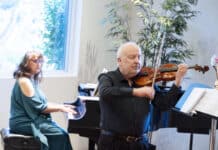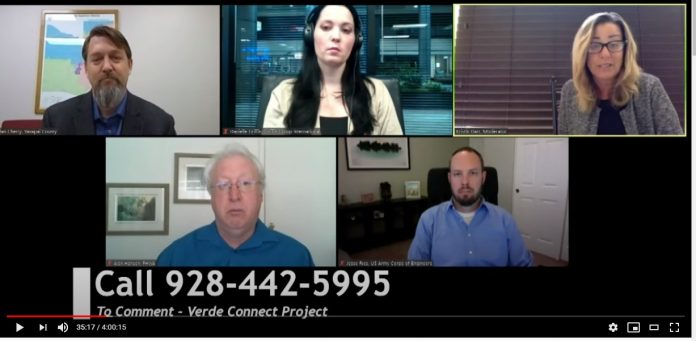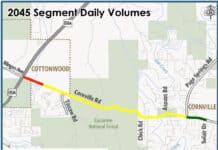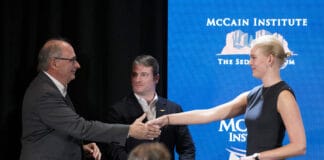In December 2018, the Federal Highway Administration approved a grant application from Yavapai County to build a road connecting Cornville Road with State Route 260.
The project, dubbed Verde Connect, is approved to receive $25 million from the FHA in order to build a bridge across the Verde River near Coury Drive, before winding through mostly open land of the Prescott and Coconino national forests and meeting with Cornville Road at the intersection of Beaverhead Flat Road.
On Monday, May 11, Verde Connect held its latest public meeting on the recent environmental review under the National Environmental Policy Act, which assessed how the new road would affect the surrounding areas of the road project. Like every event these days, the hearing was affected by the ongoing coronavirus crisis and the need for social distancing.
Rather than holding the event in person, the county — joined by representatives from the FHA and the U.S. Army Corps of Engineers — held a virtual public hearing on Monday afternoon from 4 to 8 p.m. streaming video live on YouTube and asking people to call in.
In the year-and-a-half since the grant was approved, the county has worked to turn its initial proposal into a direct plan for construction, while opponents have argued against it, led by an outspoken group of residents in the Middle Verde neighborhood of Camp Verde, who argue that the road and bridge passing close to them would ruin their area’s rural charm.
The county has held numerous public hearings on plans for the road, taking input on which route it would take in spring and summer of 2019 and meeting with the Camp Verde Town Council to discuss the town’s opposition to the construction.
Throughout Monday’s four-hour hearing, only four people called in expressing their views. Three called in expressing opposition to the project, while one expressed his support.
“As a resident of Big Park or Village of Oak Creek, we rarely utilize the Beaver[head Flat] road going to Cottonwood,” said a caller who identified herself as Jen. “I believe that the $25 million would be best served for Gila County in constructing a bridge in Tonto Basin. I believe the governor’s office stated that a number of people were killed due to flooding, and I believe the money would be best served for those residents for Tonto Creek, Tonto Basin.”
“I have a small ranch on Middle Verde Road,” said Jim Wilkinson of Camp Verde. “In about the last five years, Middle Verde has really gotten busy. Basically Middle Verde Road from I-17 westbound has turned into a racetrack …. I’ve seen several people drive off the road …. All those ranchers up and down here I think are really going to suffer from the traffic.”
Marie Shulenberg, who said she lived in Albuquerque, N.M., called in with concerns about the road affecting the local environment, and questioning whether the economic downturn as a result of the coronavirus would lead to delays from the project’s planned timeframe.
While most of the callers expressed negative views, one caller did express support, pointing to the necessity for more bridges in the area as the population grows.
“I look forward to construction beginning, because I look at this as another artery of safety for the Verde Valley,” said Eric Wilds, a Cornville resident. “I’ve been here for a few years now, and I remember when bridges were nonexistent over the Verde. And I also remember the pushback on Beaverhead Flat Road when they talk-ed about paving it. I’ve been in Cornville many years and I remember the uproar over the Mingus Avenue bridge, so I would challenge anybody at this point to take those away.”
In addition to answering calls, the hearing involved several repetitions of a 20-minute summary of the results of the NEPA process. The hearing in its entirety can be found on the VerdeValleyTV YouTube account.






















